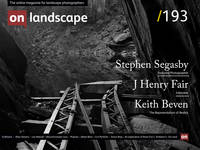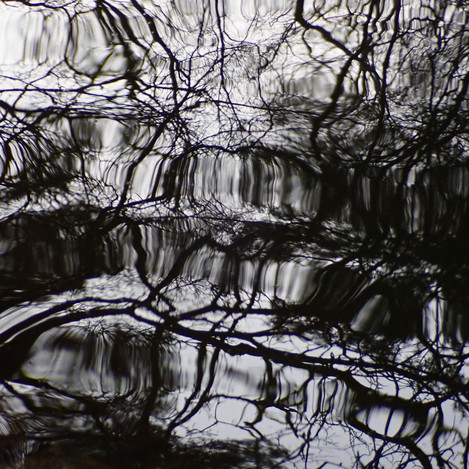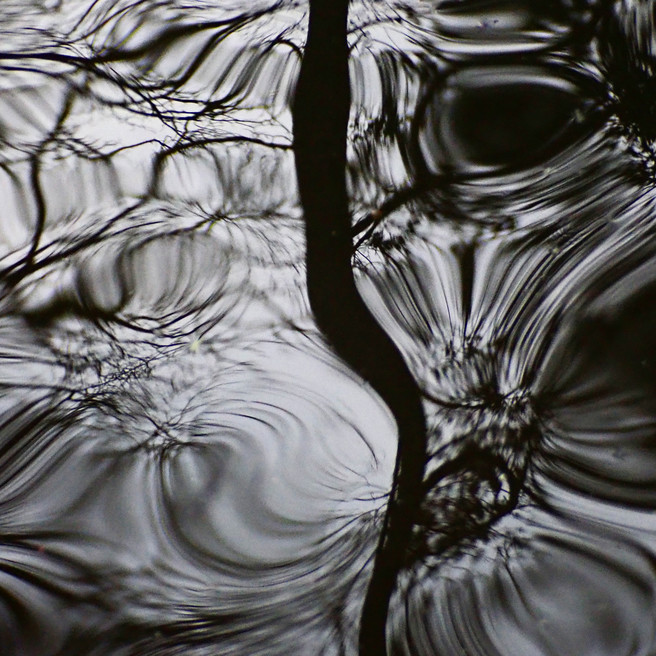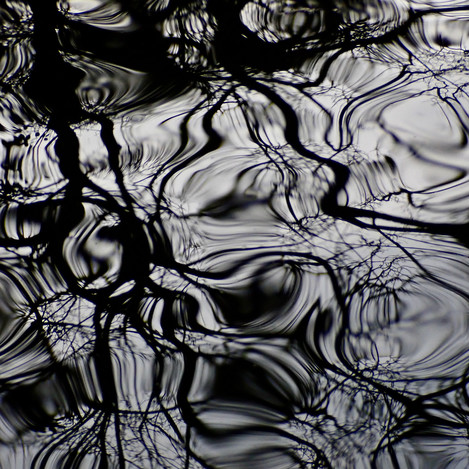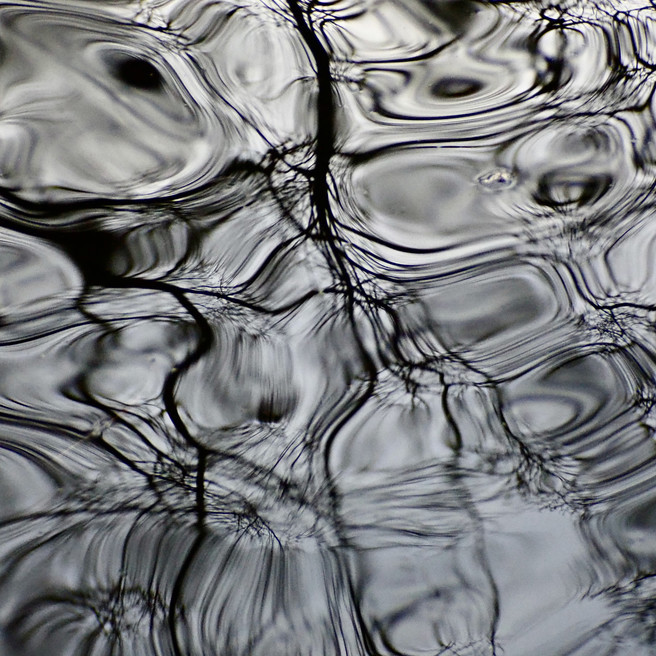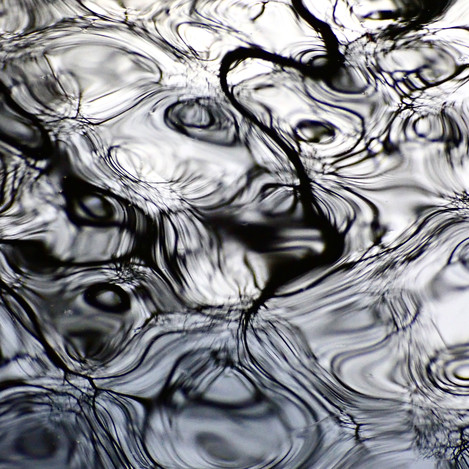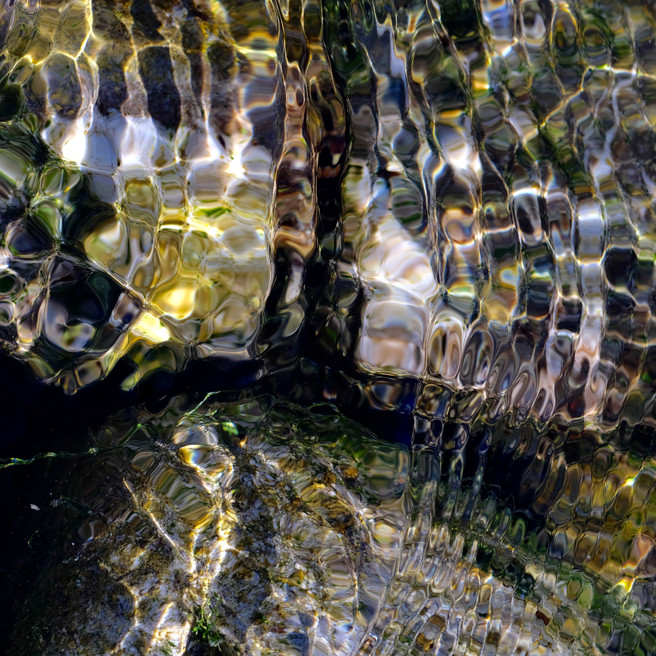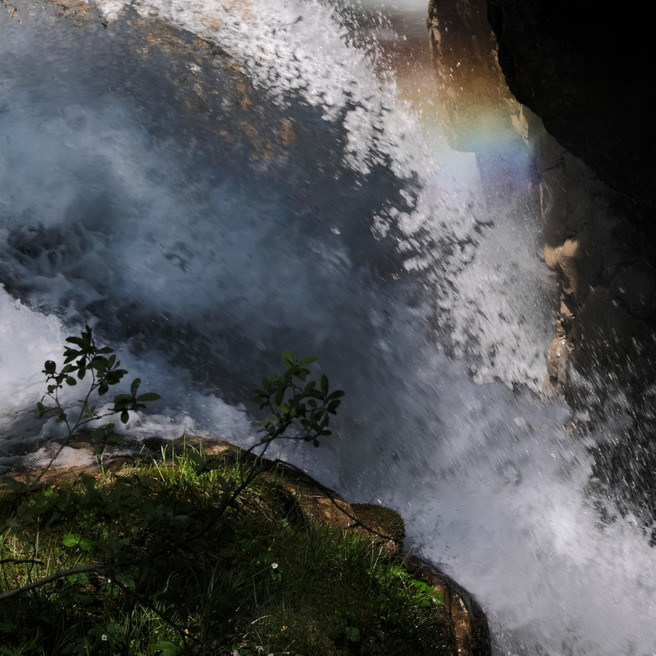Images as Experiences rather than Equivalences

Keith Beven
Keith Beven is Emeritus Professor of Hydrology at Lancaster University where he has worked for over 30 years. He has published many academic papers and books on the study and computer modelling of hydrological processes. Since the 1990s he has used mostly 120 film cameras, from 6x6 to 6x17, and more recently Fuji X cameras when travelling light. He has recently produced a second book of images of water called “Panta Rhei – Everything Flows” in support of the charity WaterAid that can be ordered from his website.
In a recent piece for On Landscape on Reflecting on Minimalism, I included a couple of images from a series called Creation by Passing Ducks, all taken one evening by the Duck Pond in Williamson Park in Lancaster (some more of the series are included here).
In that article, I rather cheekily suggested that these might be considered a sort of watery analogue to the cloud “equivalents” of Alfred Stieglitz, except that I had some doubts about inferring any deeper significance or equivalence of such images in the sense of Stieglitz or Minor White. This idea of equivalence has since come up again as expressed by John Paul Caponigro in a recent article where he states: “The photograph can be much more than a material trace of another material; it can even be much more than a trace of light and time; it can also be a trace of spirit, the energetic confluence of body, mind, and emotion, either single or multiple.”1
I am happy to accept that my scepticism about this spiritual essence is my problem (with my scientific background) rather than theirs. That is not to say that I do not have a serious involvement with the images that I make. I also hope that some vestige of the intent in making the images will be conveyed to the viewer looking at them.
The pictures are not of particularly high quality (they were taken while I was testing a new add-on telephoto lens on a little 12 Mp Olympus TG5 and were recorded as simple SOOC jpegs since the light was fading rapidly and I did not think to change to a RAW setting at the time). They have had minimal post-processing. While recognising that they have been recorded as digital numbers which have been subjected to in-camera processing using parameters selected by some remote Olympus colour science team, to my eye they are a good representation of the reality of the water surface as I saw it, even down to the hint of sky colour that can be seen in some of the images (they are all in colour).
Thus, they correspond to my experience of reality at that moment, even if my memory of that experience will already have been influenced by viewing the images after the event. That is something that we cannot escape; moments are fleeting whereas images can be viewed at length and consequently have a progressive impact on our perceptions. That equally applies to images that have been heavily post-processed. Such images, viewed at length, can change the expectation of reality to the extent that some photographers will be disappointed to not match images they have seen of a place when visiting for the first time (or they will try post-processing in some way to achieve the expected result)3. Indeed, I am sure that I am not the only person who, on seeing some remarkable (and sometimes rather artificial looking) landscape image, plays the game of trying to work out what the scene might have looked like to the eye before the application of colour gradient profiles, HDR stacking, luminosity masks, gradient filters, etc4. I am not at all suggesting that all images should be “photo-realistic” – they are necessarily analogues and there may be very good reasons for post-processing to achieve a particular mood or intention or some (emotional) satisfaction on the part of the photographer5. That seems to me to be a bit different, however, to suggesting some equivalence or trace of spirit by which: “The visible can be used to reveal the invisible; the external can be used to reveal the internal” (John Paul Caponigro again).
And yet …. perhaps there can be something more to even rather realistic images if we think about them more as experiences than equivalents. There is perhaps a sort of analogy here with the introduction of experiment into science in the 17th Century, leading to a questioning of relying primarily on intellectual deductive reasoning that had been dominant since the Greeks. Following Francis Bacon (1561 -1626) and René Descartes (1596-1650), science started to make much more use of direct experience as a way of learning about the world. In the Age of Enlightenment6, the use of experiment was developed in many areas of science, including that of water. Pierre Perrault (1611–1680) in France did experiments on the subsurface flow of water and was perhaps the first to demonstrate that rainfall over a catchment area was sufficient to maintain the discharge of water in rivers. Edmund Halley (1656-1741) in Oxford did experiments on evaporation of water (in addition to astronomical and other observations) but disagreed with Perrault; he argued that some condensation of rising water vapour in the subsurface was required to sustain river discharge. Blaise Pascal (1623 – 1662) in France established his principle of fluid dynamics also around this time. The science has, of course, progressed a lot since then. Direct experiment and visualisations of flows in both the laboratory and the field have continued to be used in the development of hydrology and hydraulics to the present (in addition to both deductive and predictive use of computer simulations). Despite three centuries of experiment, however, the application of scientific principles in representing water flows in the real world remains rather inexact for rather good reasons.7
What does this have to do with Creation by Passing Ducks?
These images (as with very many landscape images) can also be thought of as a form of a record of direct experiences with reality (with real water surfaces in this case). They are found experiences, and therefore rather different from the planned experiments that we might do in the laboratory where we try and control the boundary conditions to an experimental flow as far as possible. Controlling ducks, or other elements of the environment, is a much more difficult problem.
Philosophers distinguish many different types of realism (and many different types of anti-realism and idealism). As landscape photographers we probably mostly tend towards a common-sense or pragmatic realist view, i.e. we are happy to accept that the things that we make images of exist in reality and that the light emitted or reflected from them can be used via the means of a camera to create something real (especially in the more tangible form of film or prints) even if any image can be only an abstracted representation of the original. In this sense, landscape images can record experiences and can, therefore, reveal something about the nature of places over a range of scales and about what happens in those places. This implies that the final image should maintain some relation to what the eye experienced at the time.
Being realist clearly does not preclude being artistic, however. The evidence is surely there in the many landscape as art images by many fine landscape photographers that are convincing in the sense that reality could have been experienced like that. The artistic is in the challenge of choosing an image in space and time from the huge variety of the real landscape. It is the selection of just what is in the frame, and just when and how the image is captured (light is all important) that creates the art, whether that is the result of prior planning or purely serendipitous. How the image is captured can be important: a ND grad might well make the overall image look more realistic to the viewer.
I stress that this is not an argument against the creative taking or post-processing of images, (as Guy Tal has pointed out, the “natural” can still be a deception10 and there will be many different types of experiment that can record the experience of individual photographers). I suggest only that if an image is to have any deeper meaning in the realist sense, then keeping a strong link between image and the real landscape is important. I know it is important for me (even if I am also happy to produce black and white images11 and colour and slow shutter speed images of water that go a little beyond the immediate experience of the eye; see Singine #10, Glâne #3, and Falls below Griesalp, #2, all taken in Switzerland in 2019). However, I remain reluctant to stray too far in post-processing from my (imperfect) memory of the original perception and visualisation.
This is, of course, rather in conflict with the ideas of Jean Baudrillard (and his images12). He suggested that the modern saturation of communication with images, and the potential for the construction of images means that there was no longer a link with reality. The image now precedes the real: the real is dead13. Clearly, since Baudrillard was writing in the 1980s, the number of images being produced has continued to multiply. As noted earlier, we are affected by our consumption of those images; we can reflect on them at length, and explore those taken and manipulated by others before visiting a place. This certainly changes our expectations, but should not necessarily change our experiences of the real when we are actually out in the world. We can still create our own experiences and reflect them in our images, such in those created by ducks.
Or is this all just another manifestation of C.P. Snow’s two cultures14; landscape with the regard of the scientist rather than that of an artist? Guy Tal, in his recent article on Beyond Equivalence15, suggests that equivalence can be used by an artist to “communicate ulterior, subjective, meanings beyond objective appearances; it can also be a means of communicating in photographs meanings that cannot be communicated in any other way.” So perhaps I am just demonstrating the limitations of my perceptions. Happily, it can still prove to be really rather satisfying in revealing and recording experiences that might otherwise be passed by, even if that special equivalence might be missing.
References
[1] What is Equivalence? by John Paul Caponigro in Luminous Landscape at https://luminous-landscape.com/what-is-equivalence/.
[2] For example, Deception by Realism and Beyond Equivalence by Guy Tal in On Landscape, and articles by Tim @ Leicaphilia including Life imitating art, or reality imitating images, and Being an Authentic Photographer.
[3] See the concept of “the death of the real” in Jean Baudrillard, 1981, Simulacra and Simulation
[4] And, increasingly, the application of artificial intelligence – see https://fstoppers.com/originals/death-photoshop-warning-photographers-399501
[5] Guy Tal gives a good account of the arguments in Deception by Realism
[6] Bacon’s Novum Organum (1610), in which he outlined a methodology of science based on experience, is sometimes suggested as the starting point of the Age of Enlightenment; Decartes Discourse on the Method (1637) was an important contribution that was rapidly distributed around Europe.
[7] See my article on the Science and Art of Hydrology in On Landscape at https://www.onlandscape.co.uk/2017/04/the-science-and-art-of-hydrology/, and Towards a methodology for testing models as hypotheses in the inexact sciences, Proceedings of the Royal Society A, 2019 (doi: 10.1098/rspa.2018.0862).
[8] In sub-atomic physics science has also progressed to domains that cannot be directly experienced, but are rather studied by means of indirect visualisations.
[9] Albeit that scientists will often use image manipulation to try to reveal detail in the original to aid interpretation and further understanding, e.g. satellite remote sensing images, presentation of radio and Hubble space telescope images, polarized rock thin sections etc.
[10] See Deception by Realism On Landscape, Issue 188
[11] Even if, as a user of monochrome film for over 50 years, and more recently a user of infra-red monochrome film, it is difficult to argue that such filtered images are realist to the eye. Perhaps these still feel “natural” to me having grown up at a time when monochrome was the norm. Colour infra-red is, however, definitely a step too far for me!
[12] See for example http://chateaushatto.com/exhibition/ultimate-paradox-the-photography-of-jean-baudrillard/
[13] See Jean Baudrillard, Simulacra and Simulation (1981); The Evil Demon of Images (1984). There is a nice brief discussion of this view at http://leicaphilia.com/life-imitating-art-or-reality-imitating-images/
[14] C.P. Snow, The Two Cultures and the Scientific Revolution (1959)
[15] See Beyond Equivalence, On Landscape, Issue 192

